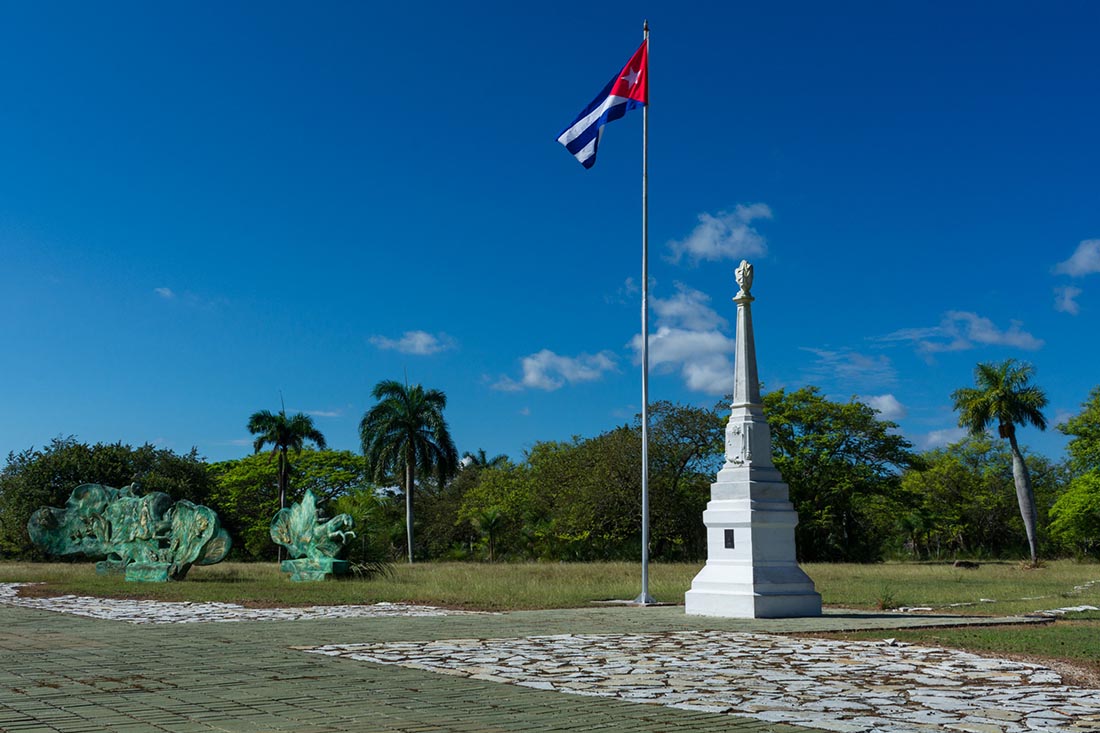Among the historical sites that, due to their values, hold the category of National Monument in Camagüey province, Jimaguayú pastureland stands out, where Ignacio Agramonte Loynaz fell in combat and the Constituent Assembly of the same name is held.
Located in the municipality of Vertientes, more than 25 km south of the capital, it is an obligatory itinerary for those who seek to know, expand the information about El Mayor and in a general sense the Cuban independence struggles, since these pastures served as a Mambí camp and in them actions of great strategic difficulty were carried out.
Declaration as a National Monument
Its declaration as a National Monument, due to its marked historical values, is made on December 25th, 1979; embodied in the obelisks that comprise it, mentioned below: the first, erected in 1928 by the Secretary of the Veterans of the War of 1868 with the aim of glorifying the death of the famous patriot; the second, built to mark the fall of Agramonte’s bodyguard, Lieutenant Jacobo Díaz de Villega, on the same day May 11th, 1873; and a third monument that evokes the celebration of the Jimaguayú Constituent Assembly and the approval of the constitutional text.
A sculptural set, made up of three pieces forged in metal, concrete and ferrocement, complements the previous ones. In it, the Agramontine cavalry appears dignified. As Daris Rondón explains well in her article, from south to north and from largest to smallest, the component pieces were placed, accompanied by weeds and guineo trees, common attributes of the landscape of that time. Its location also maintains the same position and the route that Ignacio took that morning.
Restorations carried out
Arduous days were led by restorers and builders of various institutions, headed by the Office of the Historian of the city, as part of the heritage management to turn it into a historical park, hence the achievement is manifested as a symbol of Agramontine identity and according to the words of Camagüey researcher Elda Cento, in the validity of a legacy.
In addition, it contains ecological and natural elements that highlight the importance of space. It is valid to add the construction of a room to place the scale model of the combat in which Ignacio Agramonte would fall.
Conclusions
Different activities are carried out each year in the place: solemn and commemorative acts, visits, among others, that ratify the importance of it; because in a context where it is restored and defended, it raises its voice as a symbol of national, regional and local identities.
Bibliography
Granma newspaper on Thursday, May 1st, 2003. Historical park in Jimaguayú pastureland.
OHCC website. Dairis Rondón. Declaration of a National Monument to the historic site of Jimaguayú, December 25th, 2020.
Translated by: Aileen Álvarez García






